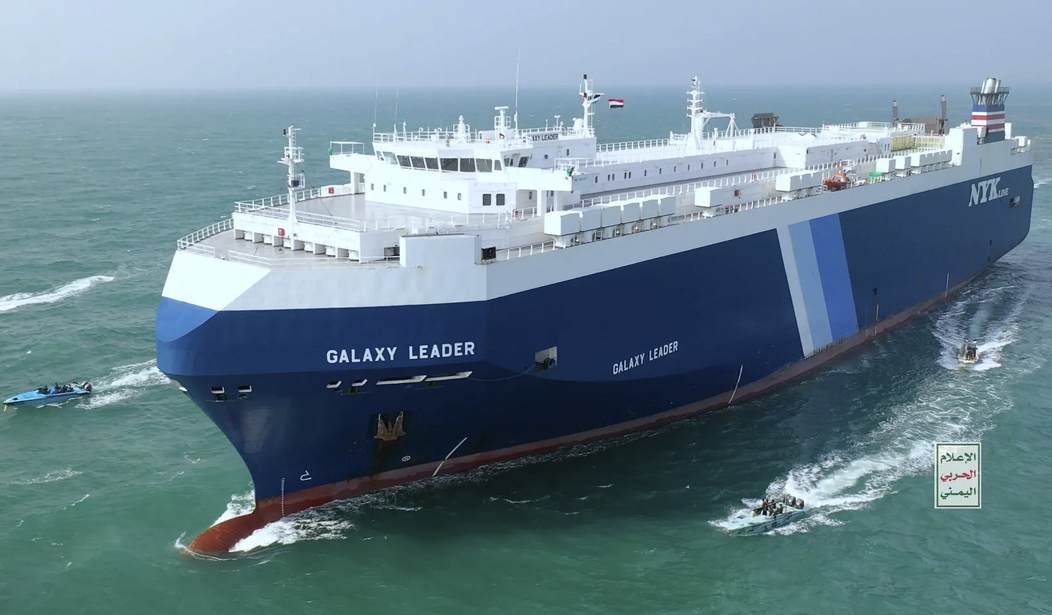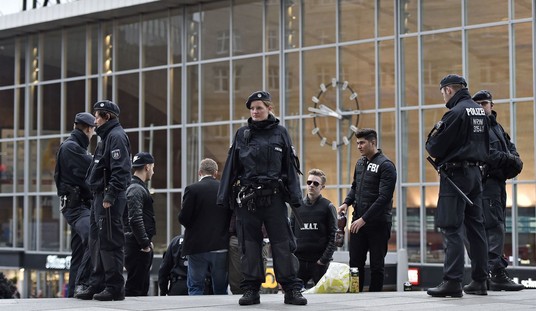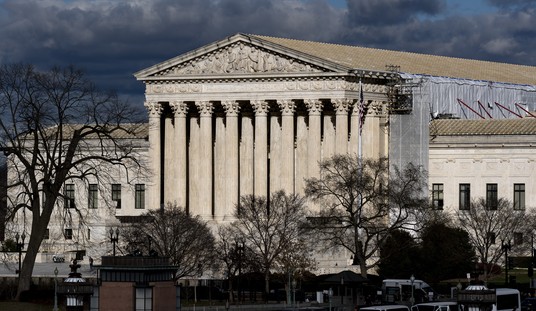It’s hard to see how much longer this can last without a significant effect on the global economy. Oddly enough, it’s #Bidenomics, inflation, and a uniformly shaky world financial situation that’s actually helped mitigate some of the effects of the Houthi militia’s fiery hijinks in the Bab al-Mandeb strait. We were already in kind of sorry shape, and our energy sector had helpfully risen to meet the demand created by curtailments thanks to Ukraine and OPEC, insulating us from oil price shocks. To a certain degree, we theoretically could roll with this for a little while longer before it becomes a critical situation for everyone concerned.
No one in their right mind wants it to continue.
…Over a recent 30-day period, 517 container ships steered clear of the Red Sea by going around the Cape of Good Hope, while 212 continued through the Suez Canal, said Jonathan Roach, who tracks container shipping for Braemar, a London ship broker. In November, he said, the ratio was roughly the reverse.
Tankers that carry oil and liquefied natural gas around the world are also increasingly avoiding the Suez Canal. Even L.N.G. tankers from Qatar, a major supplier of gas to Europe whose vessels had been considered shielded from Houthi attacks because the emirate had hosted Hamas leaders, are now going around Africa, said Laura Page, an analyst at Kpler, which tracks shipping.
Over time, more tankers may choose the longer route. “There will be a point at which the pain and the cost to go into the Red Sea and through the Suez Canal outweighs simple economics of going around the Cape,” Lois Zabrocky, chief executive of International Seaways, which owns and operates oil and chemical tankers, said at an investor event last week. “And this is a constantly evolving situation.”
Still, energy prices have been subdued, reflecting weakened demand and rising production in the United States and elsewhere, with Brent crude below its level on Oct. 7, the day Hamas attacked Israel. Even as tanker freight rates have risen by about 25 percent since the Red Sea disruptions began, according to Goldman Sachs, European natural gas prices have remained muted, probably because of large amounts of fuel in storage and alternative supplies from the United States.
According to Bloomberg, those 500 ships represent about a quarter of all the container-shipping capacity in the world, and they’ve just had to add an additional two weeks to their transit time, thanks to avoiding the Red Sea. That’s one economic impact.
In Europe, Tesla and Volvo had to put the brakes on production because they didn’t have parts arriving from China when they were needed. And how are finished cars delivered?
You guessed it.
Automotive giants Tesla and Volvo have announced pauses to the production of their electric vehicles (EVs) in Europe. Electric vehicles are seeing record sales and demand worldwide, but a lack of parts means that factories cannot sustain their production.
The reasons for this are complex. Parts are taking longer to deliver as attacks by Houthi rebels force ships to avoid the Red Sea. And there are also issues around the monopoly that Chinese factories hold on many EV components, including crucial lithium batteries.
…Tesla and Volvo have other factories and other product lines that can keep running. But even finished vehicles traveling from plants in China for sale in Europe are affected by the need to avoid the Red Sea. Vehicle manufacturer, Geely, which also produces Volvo vehicles in China, has warned of delays to European consumers expecting their new cars in early 2024.
Idled line workers and lost production time cost everyone money. Then the back-up created by the production hold can create its own miseries.
There’s also an additional insurance cost – a “war premium” – that now has to be figured against all the growing costs of a detour voyage thanks to the Houthis. Some firms are choosing to balance the war premium against the fuel and crew wages of the lengthier Cape of Good Hope transit, and deciding to pay the premium…for now.
…But the cost to insure container ships or tankers transiting the Bab al-Mandeb strait off Yemen en route to the Suez has jumped in recent weeks.
Marine war risk premiums have soared around fiftyfold since before the war, to as high as 1 percent of the value of the ship, although about 0.7 percent appears to be more common. For a ship carrying goods worth $100 million, that means an extra $700,000 for the few days necessary to go through the Red Sea area.
…Some underwriters are also insisting that clients have language in their contracts guaranteeing that they have no connection to Israel, whose military campaign in Gaza is the reason the Houthis give for their attacks, or to the United States and Britain, which have launched air and missile strikes on the Yemen-based group. In an effort to ward off against attacks, a growing number of ships have broadcast messages like “No Contact Israel,” according to TankerTrackers, a monitoring service.
…But at the moment, most of the giant vessels that bring stacks of containers to Western ports from China are taking the Africa route, which could require an extra two weeks with higher fuel costs. Over a recent 30-day period, 517 container ships steered clear of the Red Sea by going around the Cape of Good Hope, while 212 continued through the Suez Canal, said Jonathan Roach, who tracks container shipping for Braemar, a London ship broker. In November, he said, the ratio was roughly the reverse.
Tankers that carry oil and liquefied natural gas around the world are also increasingly avoiding the Suez Canal. Even L.N.G. tankers from Qatar, a major supplier of gas to Europe whose vessels had been considered shielded from Houthi attacks because the emirate had hosted Hamas leaders, are now going around Africa, said Laura Page, an analyst at Kpler, which tracks shipping.
Container rates themselves are rising thanks to shortages created by the longer route. Where a vessel transiting the Suez might make X amount of round-trips in a year, the additional two weeks to travel under the African continent could easily slash the number of profitable trips. Less trips, same demand, more expensive to make sure your goods get on the ship that is leaving.
…Global shipping prices are continuing to rise as Houthi rebels keep up attacks on cargo vessels in and around the Red Sea.
The disruptions are at a key point for ships passing through the Suez Canal and are creating ripples across supply chains in Europe and the U.S., delaying shipments and raising transportation costs.
Average worldwide costs of shipping a 40-foot container rose 23% in the week through Jan. 18 to $3,777, according to London-based Drewry Shipping Consultants, more than doubling in the past month.
The increases are being felt far beyond the disrupted trade routes that link China with Europe and the U.S. East Coast. Spot-market rates to ship a container from China to Los Angeles rose 38% in the week through Jan. 18 to $3,860.
“Volatility is back, big time in international container shipping,” said Philip Damas, managing director of the Drewry Shipping Consultants group.
It’s a boatload of money and that’s going to be passed on to consumers.
…”There is definitely a waning appetite for underwriting risks in the Red Sea,” Munro Anderson says.
He says that for large ship owners and operators such as Maersk, “I’d be fairly comfortable in saying that the risk to life at sea is probably the number one guiding principle.”
Experts say it costs shippers an additional $1 million each way and nine to 12 more days at sea each way to travel the longer route around South Africa’s Cape of Good Hope. That compares with $1 million to $1.5 million more for insurance to transit the Red Sea right now.
But “a good benchmark” for the value of a large container ship plus its cargo is about $1 billion, says Jensen, meaning that the additional costs for an “around Africa” route, while not insignificant, are worth it to avoid the risk of going through the Red Sea right now.
Sadly, curing these ills is going to take experts when all we have are Experts™. Listening to a Capt John Konrad Spaces on X the other day, I was horrified to learn that this White House – these big shot global citizens – had shut down the maritime desk. The Biden administration hasn’t even the tiniest little corner of a room at the WH dedicated to something so crucial, and no one who is an expert on international shipping in the building.
They have Mayor Pete.
Just looked up McKinsey…you'd think Mayor Pete would apply that 3 years of knowledge to his job?
— Mike Bennett (@COLMikeBennett1) January 21, 2024
And Lloyd Austin.
Blows my mind.
It’s hard to see how much longer this can go on, although with this crew in the White House?
It’s been hard to see any of it.







Join the conversation as a VIP Member